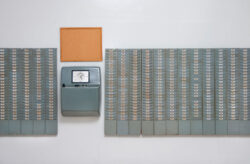How the Digital Age Helps Us Pray

Sam Rainer
God speaks to us through his Word, the Bible. Amazingly, we have the privilege of speaking to God through prayer. There are good ways to pray. There are bad ways to pray. Our prayers can grow our faith. The selfless prayers of a dedicated Christian can change history. Our prayers can also be misdirected and selfish. We can beg God for things we don’t need. It takes work to pray well, which means anything we can use to help our prayer life is worth considering.
Somewhere between 1950 and 1970, the digital age began to change everything. Invented in 1947, the tiny transistor launched a revolution. Radios, calculators, computers, and cell phones wouldn’t exist without the ubiquitous transistor. Today, there are more people with access to a mobile phone than a toilet.
The science of transistors can be complex, but they do one practical thing well: amplify. This amplification is what makes hearing aids work, as well as cell phones. Transistors help you hear better and louder. Prayer is the transistor of spiritual disciplines. With a healthy prayer life, you hear God better and louder.
Digital tools can help you become more disciplined in prayer. Prayer is like a transistor, but the actual transistors can benefit your prayer life as well. The tiny components inside your digital devices make possible the proliferation of creative applications. Twitter, Facebook, and texting simply wouldn’t exist without the humble transistor. In the same way our prayers can be both good and bad, digital tools can be useful or wasteful. Let me detail a few ways digital tools help us pray.
Twitter lets the masses know immediately. I’ve prayed countless times after seeing someone tweet about a need for prayer. Obviously, prayer is more than a 140-character social media comment. However, Twitter becomes a great tool when you have an urgent request. A quick tweet can get lots of people praying immediately.
Facebook helps build a sense of community. Nothing can replace a time of face-to-face, personal prayer with a few close friends, but Facebook broadens these circles. Not everyone can be physically present to pray with you personally. Distance from people, conflicting schedules, and physical limitations may prevent others from praying with you in person. Through Facebook, friends and family can pray together in a digital form.
Google Keep is one way I remember to pray. It’s a simple tool that manages tasks, lists, and reminders. The promise I most often break is “I’ll pray for you.” Eventually I started writing down people’s names. But I don’t always have a pen and pad. I always have my phone. Google Keep helps me record people’s names and requests. I can then set a reminder on the note to help me remember when to pray for them. The reminder becomes a notification on my phone. I don’t break my promise nearly as often now.
Texts are a great way to follow-up with people. After my prayer time, I’ll often text people to let them know I prayed for them. It’s an easy way to follow up. If you’re like me, then you’re probably guilty of praying for others without letting them know. A quick text allows others know!
Historically, Christians have used handwritten letters, telegrams, and land line phone calls to exercise the spiritual discipline of prayer. The digital age gives us new tools. Use them to hear God better. Use them to speak more often to Him.
A version of this post was first published at the echurch giving blog.







Echo is a great app for reminding yourself to pray as well.